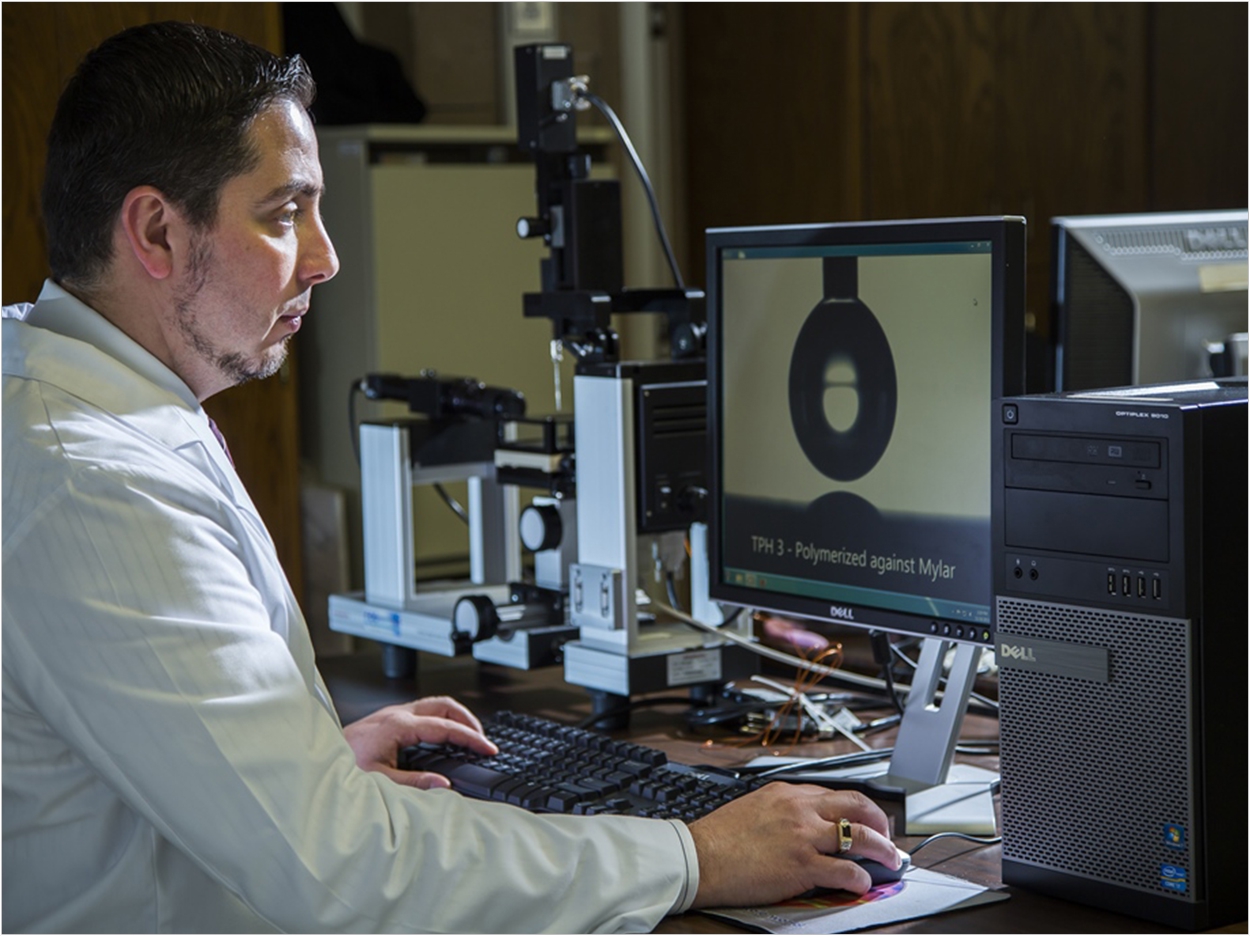
A multidisciplinary team of researchers at the University of Oklahoma (OU) is developing nitrogen-doped titanium dioxide nanoparticles to improve dental restorations and fight secondary cavities.
Dental adhesive resins degrade over time due to a combination of water, salivary enzymes, oral bacteria, acidity, temperature variations, and cyclical masticatory forces that allow pathogenic bacteria to penetrate through the adhesive to form caries-producing biofilms, considered the major cause of restoration failures.
The researchers then asked if the adhesive resins used in restorative dentistry could do more than create the necessary bond between filling and tooth by also fighting against the bacteria that attack it.
With a proposed solution based on nitrogen-doped titanium dioxide nanoparticles, the researchers received a three-year, $135,000 grant from the Oklahoma Center for the Advancement of Science and Technology (OCAST).
“A nanoparticle can be 750 times smaller than the thickness of a human hair,” said Sharukh Khajotia, BDS, MS, PhD, associate dean for research and innovation at the OU College of Dentistry.
“The properties of many conventional materials change when formed from nanoparticles because they have a great surface-to-volume ratio compared to larger particles,” Khajotia said.
The grant specifically responds to the 2020 Oklahoma Health Research Program funding opportunity.
“It is a logical next step in my long-term career goal to pursue new strategies to prevent the occurrence of secondary caries,” said Fernando Luis Esteban Florez, DDS, MS, PhD, assistant professor in the Division of Dental Biomaterials Department of Restorative Sciences.
“This includes the development of a novel antibacterial adhesive resin with long-term, non-leaching antibacterial properties, and the optimization of an ultra-bright, high-throughput, non-destructive, and real-time bioluminescence assay to assess the metabolic activity of intact oral biofilms,” said Esteban Florez.
The researchers believe that the results of the present research will give them the experience, knowledge, preliminary data, and critical mass of publications to support a request for additional funding from the National Institutes of Health.
Esteban Florez and Khajotia determined they needed to construct higher-quality nanoparticles and make them functional within dental polymers to create the adhesive resin. To achieve this, they collaborated with Adam Rondinone, PhD, a scientist from the Center for Nanophase and Materials Sciences at Oak Ridge National Laboratory in Oak Ridge, Tennessee.
The researchers began to fabricate nitrogen-doped titanium dioxide nanoparticles using highly controllable and robust synthesis processes based on solvothermal reactions. Unlike other adhesive resins, the materials developed display antibacterial properties, which are enhanced by on-demand visible light irradiation.
Next, the researchers investigated the nanoparticles using the latest-generation scientific technologies at Oak Ridge, including time-of-flight secondary ion spectrometry, small-angle X-ray spectroscopy, small-angle neutron scattering, and advanced microscopies, such as helium-ion and dual focused ion beam scanning electron micrsoscopy.
“Using neutron scattering, we can understand how well the nanoparticles are dispersed, how they impact polymer chains, and what types of interfaces are established between the polymer and nanoparticles,” Esteban Florez said.
The research is promising, the researchers said, and they are hopeful about its translation into practice. The OCAST Health Research Program makes it possible to pursue a much broader range of possibilities. For now, it has led to other findings, such as the nanoparticles’ ability to produce crystals with high concentrations of phosphorous and calcium from saliva-like solutions.
Today, the researchers hold two international patents. Current research is ongoing into functionalizing nanoparticles in areas other than dentistry, including antibacterial coatings for the control of cross-contamination in hospital settings and the development of 3D-printed air filters with long-term and self-cleaning functionalities.
Related Articles
Nanoparticles Stop Plaque and Tooth Decay Before They Start
Injectable Nanoparticles May Guard Teeth Against Tooth Decay
Composites Resist Bacteria and Prevent Recurrent Caries


